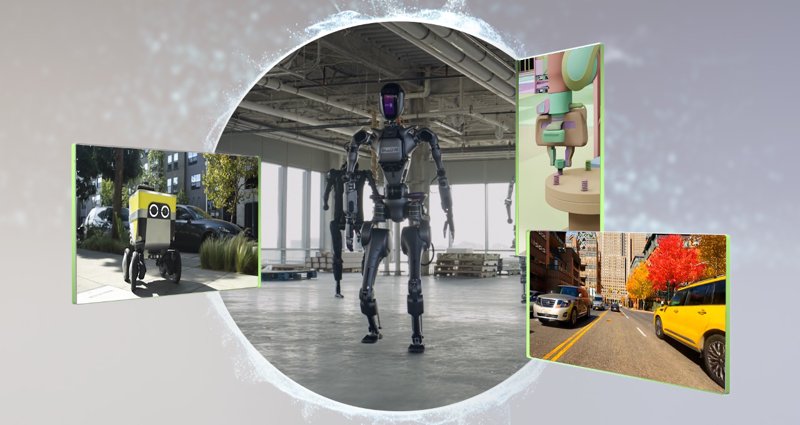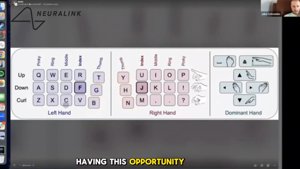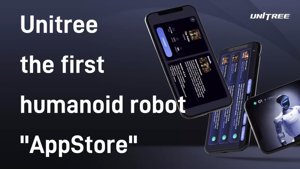Training a robot for the real world is, let’s be frank, a gloriously inefficient rigmarole. Before a bot can even contemplate fetching your slippers, it first needs a crash course in not tumbling down the stairs, confusing the family moggy for a dust bunny, or short-circuiting in a sudden downpour. This education is not only eye-wateringly expensive and soul-crushingly time-consuming but also riddled with the peril of busted hardware. NVIDIA, a company that’s practically minted money flogging the picks and shovels of the AI gold rush, has decided the solution is to pull the plug on real-world robot training entirely. Instead, they’re building them a digital dojo – their very own Matrix, if you’re feeling philosophical – in which to hone their craft.
Enter NVIDIA Cosmos, a spanking new platform engineered to churn out vast quantities of eerily accurate, synthetic data, designed to groom the next generation of “Physical AI.” This isn’t merely about conjuring up pretty simulations; it’s about forging foundational “world models” that bestow upon an AI a gut-level grasp of physics and causality. By letting robots “live” millions of virtual lives, they can cram a thousand years of training into a matter of days, learning from every conceivable—and gloriously inconceivable—scenario without putting a single dent in their real-world chassis.
The Gospel of World Models
At the beating heart of NVIDIA’s cunning strategy lies the “world model,” a concept poised to catapult AI beyond mere pattern recognition into the hallowed halls of genuine understanding. A world model empowers an AI to simulate cause and effect, effectively handing it the keys to its own imagination. It can ponder “what if?” and shrewdly predict the outcome of its actions – an utterly indispensable skill for any contraption attempting to navigate our delightfully chaotic, utterly unpredictable physical world.
The benefits are blindingly obvious to anyone who has watched a robot come a cropper spectacularly at a simple task:
- Safety: A fledgling autonomous vehicle can smash into oblivion ten million times in a simulation with precisely zero real-world consequences, learning from every minor shunt to become a safer driver in reality.
- Scale: It’s simply impossible to collect real-world data for every single edge case, like, say, a rogue badger sporting a traffic cone leaping onto a motorway during a hailstorm. World models, however, can generate this wonderfully outlandish-yet-plausible data on tap.
- Efficiency: Instead of meticulously hard-coding every single action, developers can let the AI learn through reinforcement in a simulated environment, slashing development time and costs with surgical precision.
This, dear reader, is the very foundation of Physical AI—intelligence that can perceive, reason, and interact with the world of atoms, not merely the ephemeral realm of bits. And NVIDIA, it seems, is busy erecting a veritable technological cathedral upon that very rock.
Omniverse: The Operating System for Reality
The magnificent robotic ballet’s stage is NVIDIA Omniverse, a real-time 3D development platform that serves as the veritable operating system for crafting digital twins. Think of it as the bedrock layer where developers can build and simulate jaw-droppingly photorealistic, physically spot-on virtual worlds. From a single sprawling warehouse to an entire sprawling city, Omniverse provides the perfect environment for the AI to train.
A key pillar of Omniverse is its foundation on OpenUSD (Universal Scene Description), the 3D scene description technology originally conjured into existence by Pixar. This is far more than a mere file format; it’s a comprehensive framework for interoperability, allowing complex 3D data from various tools to harmoniously coexist and collaborate without a hitch. This open standard masterfully sidesteps vendor lock-in and cultivates a thriving, collaborative ecosystem, which is exactly what the doctor ordered for constructing worlds of epic proportions. The Alliance for OpenUSD, which includes tech titans like Apple, Adobe, and Autodesk, standing shoulder-to-shoulder with NVIDIA, is a resounding testament to its undeniable, industry-wide clout.
Cosmos: The World Forger
If Omniverse is the stage, NVIDIA Cosmos is the generative AI engine that not only pens the script and directs the dramatis personae but also conjures and shifts the scenery on the fly. Built on top of Omniverse, Cosmos is a platform bristling with World Foundation Models (WFMs)—powerful AI models honed specifically to conjure forth and artfully manipulate realistic world data. It’s the system that infuses the digital twins with both the breath of life and an endless tapestry of variability.
Cosmos provides an arsenal of tools to automate and supercharge the scaling of training data creation. Two of its most ingenious components are Cosmos Predict and Cosmos Transfer.
Cosmos Predict & Cosmos Transfer
Cosmos Predict is the platform’s veritable oracle. You can provide it with a prompt—be it text, an image, or a video clip—and it will generate a physically consistent video prediction of the unfolding narrative. For instance, a developer could present it with an image of a bustling street corner and ask it to generate a 30-second simulation of “a delivery truck barrelling through a red light during a snowstorm.” The model generates the scene, brimming with spot-on physics, nuanced lighting, and an array of multi-camera perspectives.
Cosmos Transfer, on the other hand, is a data augmentation wizard. It can take a single simulation and magically remix it into countless permutations. That one video of a robot navigating a warehouse can be effortlessly transmuted into scenarios with different lighting (day, night, dodgy fluorescents), varied weather conditions, or a plethora of surface textures. This process creates a robust dataset that trains the AI to handle a bewildering panoply of real-world conditions.
More Than Just a Simulation
NVIDIA’s grand vision is as clear as a bell: they’re no longer content with merely flogging GPUs. They’re building the whole vertically integrated shebang for developing, training, and deploying the imminent deluge of physical AI. By providing the hardware (GPUs), the simulation environment (Omniverse), and the generative AI for data creation (Cosmos), NVIDIA is creating a powerful ecosystem that could become utterly indispensable for anyone with even a passing interest in building robots or autonomous systems.
This move addresses the single most vexing bottleneck in robotics: the rather thorny acquisition of high-quality, wildly diverse training data. By transforming data into a readily available commodity, conjured forth at a whim, NVIDIA is slashing the barrier to entry with gusto and turbo-charging the pace of innovation. The ramifications, frankly, are seismic, promising to rocket-fuel advancements in everything from autonomous logistics and manufacturing to household robotics and beyond. The age of clumsy, pre-programmed automatons is, thankfully, drawing to a close. The era of the simulated, worldly-wise robot is just kicking off. And it appears they’ll be dreaming of synthetic electric sheep, naturally, all spun into being on an NVIDIA chip.






